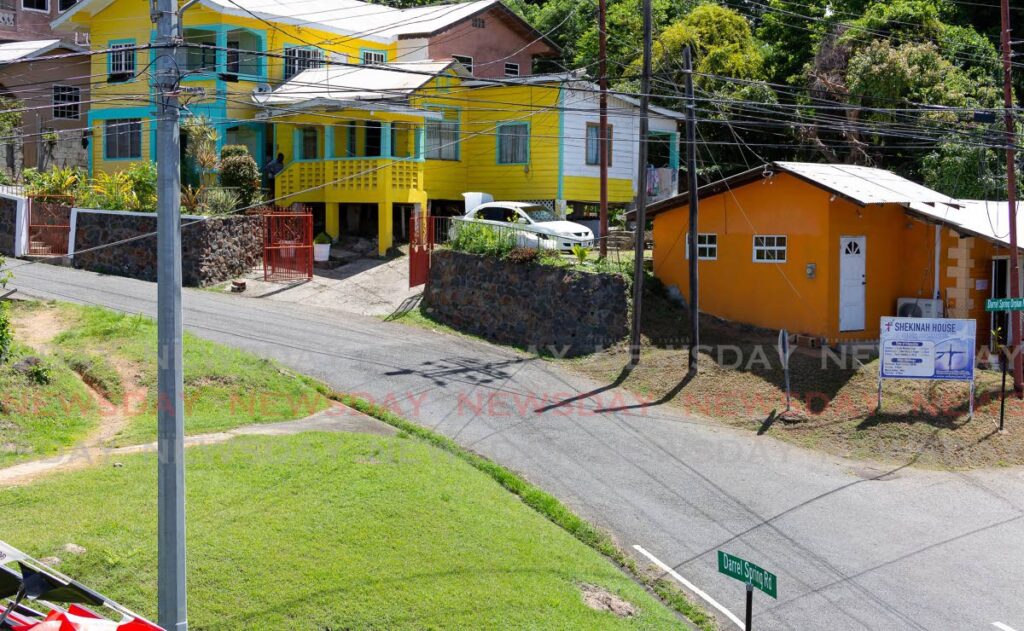Heritage lost: Tobago’s traditional houses

Dr Rita Pemberton
The most compelling ambition of the freed Africans of Tobago was the desire to own land, and with it, their own homes.
In the years immediately after freedom, land ownership was not easily attainable, because of planter-imposed impediments intended to frustrate the ambitions of the freed people.
Despite the implementation of the Emancipation Act 1834 and, four years later, the termination of the apprenticeship system, Tobago’s planting community was not prepared to release their enslaved property into freedom. Being fully aware of the strength of their desire for land, the planters were unified in their intent to prevent Africans from acquiring land, for they feared such landownership would compromise the plantations.
They continued to consider the Africans plantation labourers who were obliged (or could be mandated) to continue working on the estates under the same arrangements as during enslavement. To them emancipation meant an economic disaster, which they fought to avoid at all costs.
However, it was not a one-sided struggle, because the freed Africans fought back, and the economic realities of the day worked in their favour where land access and eventually ownership were concerned.

Although the planters succeeded in restricting land sales to Africans, they saw merit in encouraging African settlements on or close to the estates, creating a pool of resident labour, to which they expected to have full access. This they did by renting house spots and gardens to the freed Africans, providing access to land, of which the Africans eagerly took advantage.
On the rented properties, their first significant act was to build their own homes. This was the genesis of the structures now referred to as traditional Tobago houses.
Much emphasis has been placed on plantation houses as the dominant feature of the island’s built environment and the need to preserve their relics, without acknowledging the contribution of enslaved labour to their construction.
As a consequence, the traditional houses, which were the homes of the largest segment of the population, save for the efforts of local artists, have not been considered an important part of the island’s built heritage or worthy of preservation. They have been used in tourist pictures as curios of the “natives” and in some official reports to showcase the poverty of the people.
However, these presentations lose sight of the significance of these houses as symbols of the resilience of the people and their determination to overcome the challenges they faced in the post-emancipation era.
Despite being small and simple, these houses constitute markers of the transition from enslavement, as they represent the first step to the liberation of their occupants. After years of enslavement, when work and home were intertwined, when they lived and worked at the beck and call of the planters, the opportunity to separate their living spaces from their workplaces, freeing themselves from the watchful eyes and physical controlling presence of the planter employers, was an important step, the significance of which cannot be underscored.
These houses reflect the state of the population at the start of freedom and their resistance mode, and indicate the distance the population traversed to arrive at modern-day Tobago. In addition, these buildings provide evidence of the improved economic position of their owners over time.
The first houses were flat wooden two-bedroom structures built for ease of mobility should there be a disagreement with the landlord (and there were many), to permit quick relocation. These were the structures which first appeared during the establishment of the early free villages, and dominated the island’s landscape during the second half of the 19th century.
The ability to purchase land at the end of the 19th century, and the increased earnings from the cocoa industry, resulted in modification of the houses. Home improvement was an ongoing activity, and among the first to be made were size increases and separate kitchens. The symbols of permanence came with the elevation of the houses on concrete pillars of varying heights. With the houses raised off the ground, they were provided with front steps which led to a gallery, both of which served as areas of socialisation.
The use of the pillars also increased the living space by providing an “under-the-house” area in which most daily family activities occurred, and the family repaired to the upper section on evenings.
Under the house was used as a storeroom, and an area for community activities if the owner possessed a corn mill, or copper for making farine, an old-time ice-cream freezer and an icebox, which were shared with members of the community. Under the house also served as a meeting place for adults to discuss welfare matters and plan community activities.
The houses became instruments of community bonding and the strengthened resolve to overcome adversity, which were important features of the development of the Tobago community.
The contents of the house also reflected the means of the owners. In the bedroom there would be a washstand with a ewer and basin which provided water for night-time clean-ups. If resources allowed, there was a four-poster bed, with mattresses stuffed with grass or coconut fibre, which had to be “ticked” by skilled craftsmen or women to make them comfortable. Children usually slept on the floor.
There was a small dining area which accommodated a table on which a pottery water goblet was placed, and a couple of cane or wooden chairs. Typical furnishings included a safe (made of wood and wire mesh) for storing food, a cabinet which held glassware, crockery and dishes which were to be used for special occasions.
In the sitting area could be found cushioned wooden Morris chairs, a wooden or bentwood rocking chair, and a wagonette as a display stand to show fine pieces that had been acquired. Also included would be work-related equipment such as sewing machines, or work tables for carpenters and joiners.
Additional house adornments came with further improvements in the financial position. These included fretwork decorations on the front of the house and windows and/or doors with coloured muranese (also referred to as miranese) glass. The presence of houses so adorned indicates the extent of the improved financial state of individuals on the island.
The present-day visibility of the traditional houses is very low, since, unfortunately, most have been removed in favour of modern development, and their contents, despised as “old-time things,” happily discarded.
Samples of some, but not all of their contents can be seen on display at the Tobago Museum. Since there has been no effort to maintain examples of the original houses, of the surviving few, only one or two have been maintained and the remainder abandoned.
The society has thus been deprived of an appreciation of the historical markers these houses and their contents provide of the process of the transition of Tobago from a society of enslaved Africans to the Tobago of today.
Hopefully, some use can be made of the surviving few for public edification and heritage preservation.

Comments
"Heritage lost: Tobago’s traditional houses"